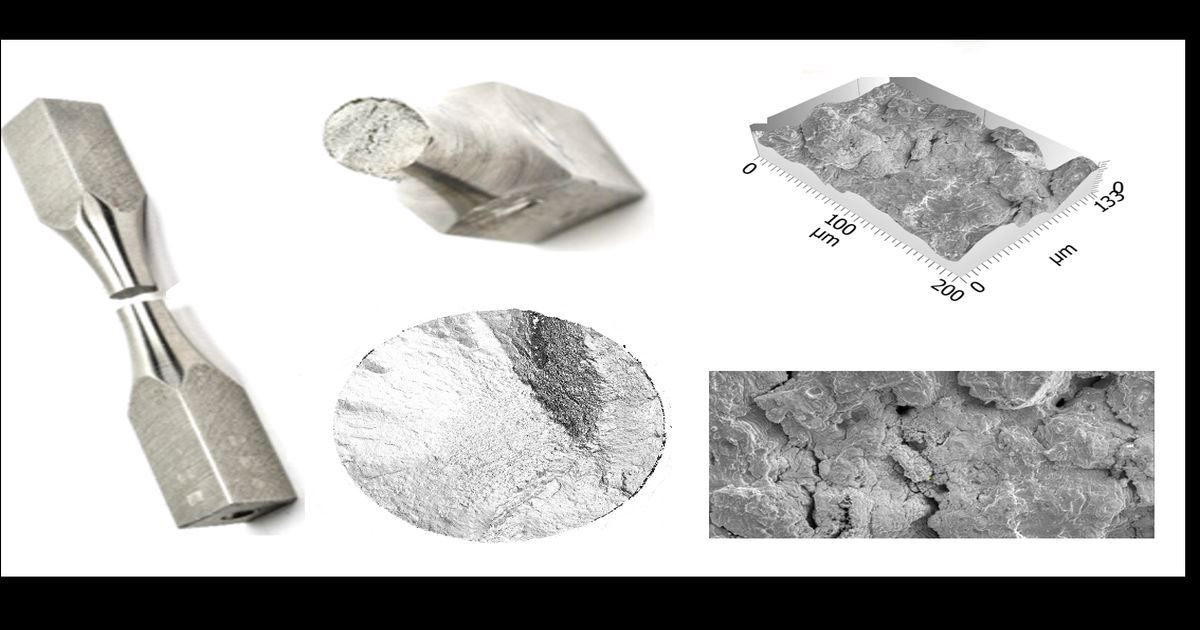Mechanics, Fatigue and Fracture of Metallic Materials (Second Edition)
A special issue of Materials (ISSN 1996-1944). This special issue belongs to the section "Metals and Alloys".
Deadline for manuscript submissions: closed (20 March 2025) | Viewed by 5137

Special Issue Editors
Interests: damage mechanics; failure analysis; fatigue of materials; fracture of materials; metal composites; mechanical properties
Special Issues, Collections and Topics in MDPI journals
Interests: fatigue; fracture; structural integrity; failure analysis; mechanical behaviour of materials
Special Issues, Collections and Topics in MDPI journals
Special Issue Information
Dear Colleagues,
Metallic materials are one of the largest groups used to produce machine components and structures. Moreover, the development of technology enables the creation of new alloys of these materials that also affect their individual characteristics depending on their production method. Therefore, the impact of these features on durability and mechanical strength requires knowledge of the damage mechanisms and their development under static and cyclic loadings.
Experimental research allows for understanding the damage mechanism, analyzing it in depth and providing information for computer simulations.
The Special Issue is devoted to the development of experimental and theoretical methods of evaluation and a description of the behavior of metallic materials subjected to fatigue loads, including but not limited to the following topics:
- Uniaxial and multiaxial fatigue;
- Damage mechanisms;
- Damage accumulation models;
- Fatigue crack growth;
- Mixed-mode fracture;
- Fatigue life assessment;
- Failure analysis;
- Metal composites.
In this Special Issue, we will explore the research progress made in understanding materials and structures' fatigue and failure mechanisms. Therefore, we kindly invite researchers and practitioners to share their expertise and insights.
Dr. Zbigniew Marciniak
Dr. Rui F. Martins
Guest Editors
Manuscript Submission Information
Manuscripts should be submitted online at www.mdpi.com by registering and logging in to this website. Once you are registered, click here to go to the submission form. Manuscripts can be submitted until the deadline. All submissions that pass pre-check are peer-reviewed. Accepted papers will be published continuously in the journal (as soon as accepted) and will be listed together on the special issue website. Research articles, review articles as well as short communications are invited. For planned papers, a title and short abstract (about 100 words) can be sent to the Editorial Office for announcement on this website.
Submitted manuscripts should not have been published previously, nor be under consideration for publication elsewhere (except conference proceedings papers). All manuscripts are thoroughly refereed through a single-blind peer-review process. A guide for authors and other relevant information for submission of manuscripts is available on the Instructions for Authors page. Materials is an international peer-reviewed open access semimonthly journal published by MDPI.
Please visit the Instructions for Authors page before submitting a manuscript. The Article Processing Charge (APC) for publication in this open access journal is 2600 CHF (Swiss Francs). Submitted papers should be well formatted and use good English. Authors may use MDPI's English editing service prior to publication or during author revisions.
Keywords
- fatigue of metals
- multiaxial fatigue
- fatigue crack growth
- mixed-mode fracture
- fatigue crack growth
- crack paths
- fatigue life assessment
- failure analysis
- damage mechanism
- damage accumulation models
- metal composites
Benefits of Publishing in a Special Issue
- Ease of navigation: Grouping papers by topic helps scholars navigate broad scope journals more efficiently.
- Greater discoverability: Special Issues support the reach and impact of scientific research. Articles in Special Issues are more discoverable and cited more frequently.
- Expansion of research network: Special Issues facilitate connections among authors, fostering scientific collaborations.
- External promotion: Articles in Special Issues are often promoted through the journal's social media, increasing their visibility.
- Reprint: MDPI Books provides the opportunity to republish successful Special Issues in book format, both online and in print.
Further information on MDPI's Special Issue policies can be found here.
Related Special Issue
- Mechanics, Fatigue and Fracture of Metallic Materials in Materials (8 articles)







